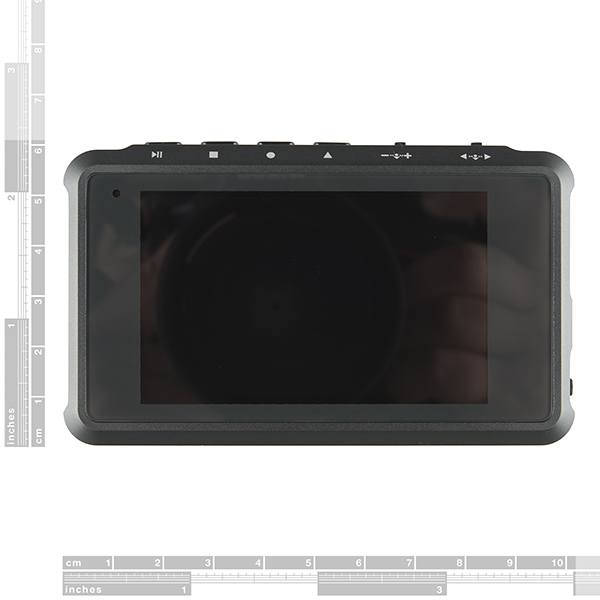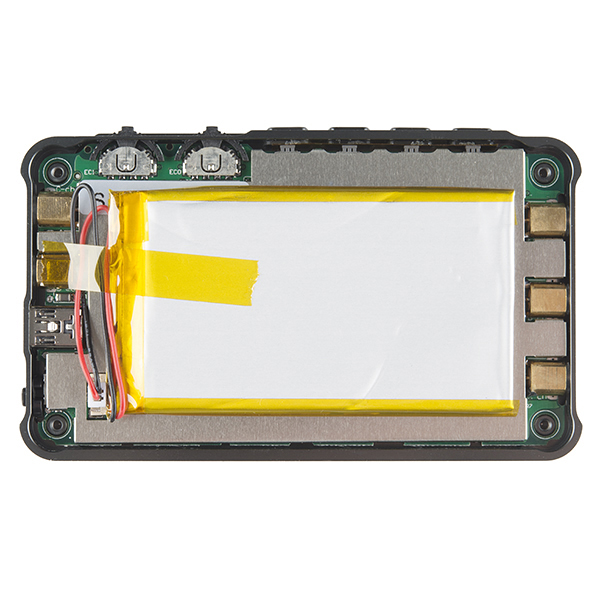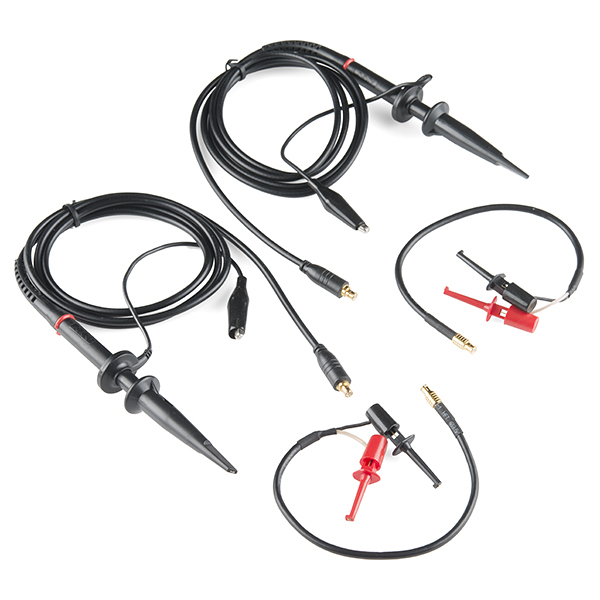DSO Quad - Pocket Digital Oscilloscope (Silver)
The Silver DSO Quad is an open-source pocket-sized 4-channel digital oscilloscope. It's based on the ARM cortex M3 32-bit platform, providing 72MS/s sampling rate with integrated FPGA and high speed ADC. The Internal 2MB memory can even store waveforms in various formats which you can transfer to your computer using a mini-USB cable.
Note: Check the link below for the most up-to-date firmware.
Note: This item may take longer to process due to battery installed in the equipment and therefore does not qualify for same-day shipping policy. Sorry for any inconvenience this may cause.
Replaces:TOL-10388
- 2 Mueller MCX Osilloscope Probes
- 2 Digital Probes
- Li-Po Battery
- User Manual
- Portable (98x60x14.5mm)
- Two 72MS/s analog channels plus two digital channels
- 2MB Internal Storage
- 3" TFT LCD (400x240)
- 8-bit Vertical Resolution
- Signal Generator
- Auto Measurement
- Various Triggering Options
- Easy waveform storage
- Firmware upgradable
- User applications
- Open source
DSO Quad - Pocket Digital Oscilloscope (Silver) Product Help and Resources
Core Skill: Electrical Prototyping
If it requires power, you need to know how much, what all the pins do, and how to hook it up. You may need to reference datasheets, schematics, and know the ins and outs of electronics.
Skill Level: Experienced - You will need to consult a datasheet for calculations to determine a components output format, linearity, and do a little math to get what you need. You will be using a datasheet or schematic beyond basic pinouts.
See all skill levels
Comments
Looking for answers to technical questions?
We welcome your comments and suggestions below. However, if you are looking for solutions to technical questions please see our Technical Assistance page.
Customer Reviews
4 out of 5
Based on 1 ratings:
so far, bad
No instruction book came with it. I've gleaned a bit from the web but it's essentially useless for me.
Greetings. the best place for information on this product is their Wiki. If you require additional information I would suggest communicating with the manufacture - Seeed Studio.








The analog bandwidth is not listed, not even in the Wiki. Based on an analysis of the circuit, the analog channels are 4.4MHz -3dB bandwidth. In addition, there are a lot of these scopes out there with an incorrectly specified TVS protection diode on the digital channels that limits their bandwidth to under 1MHz.
Also, this is NOT 72Msps per channel, It is dual 36Msps ADC converters.
Nyquist has nothing to say about bandwidth of a scope. Clearly, you cannot represent a sine wave with only two samples. It takes more like 8 or 10. That fits with a 4.4MHz bandwidth with 36Msps.
In addition, square waves require at least the 5th harmonic to approximate, more like 9th harmonic if you want any reasonable representation of the rise time. One of the requirements of a square wave is rise time. The rise time of the scope must be several times faster (shorter) than the rise time of the square wave, or it affects how the actual rise time is displayed.
There is another requirement with square waves: You are often using a scope on them to look for glitches, overshoot, and ringing. Those things will have a spectral bandwidth many times greater than that of the square wave. For that, the two digital channels are useless.
I consider a 4.4MHz scope barely adequate for audio work and sub100kHz digital signals.
The function generator is primitive. Sine, triangle, and sawtooth waveforms look like they are generated from only 3 or 4 bits of information, with big noisy steps between levels. They are stairstepped, is what I'm saying.
Over 20 years an Electronics Technician, and an Electronics Engineering Technician.
Actually a sine wave requires only sampling at 2x the frequency rate to reproduce correctly. ANY OTHER waveform will require faster sampling. In theory a square wave has harmonics out to infinity, but a ten x sample rate should reproduce a good wave shape. Increasing the sample rate has the same effect on the display of a square wave as adjusting the compensation capacitor in the probe of your scope, reducing the rounding of the wave shape corners. Try to display a square wave with only 2x sample speed and you get a sine wave!
Nothing you said refutes anything that I said.
The link to the Product Video, shown in the main listing for this product, goes to a page which says "This video has been removed by the user". The video link needs fixing.
AAARRGHH! 9 minutes after I get the email that this is on sale, it's sold out!